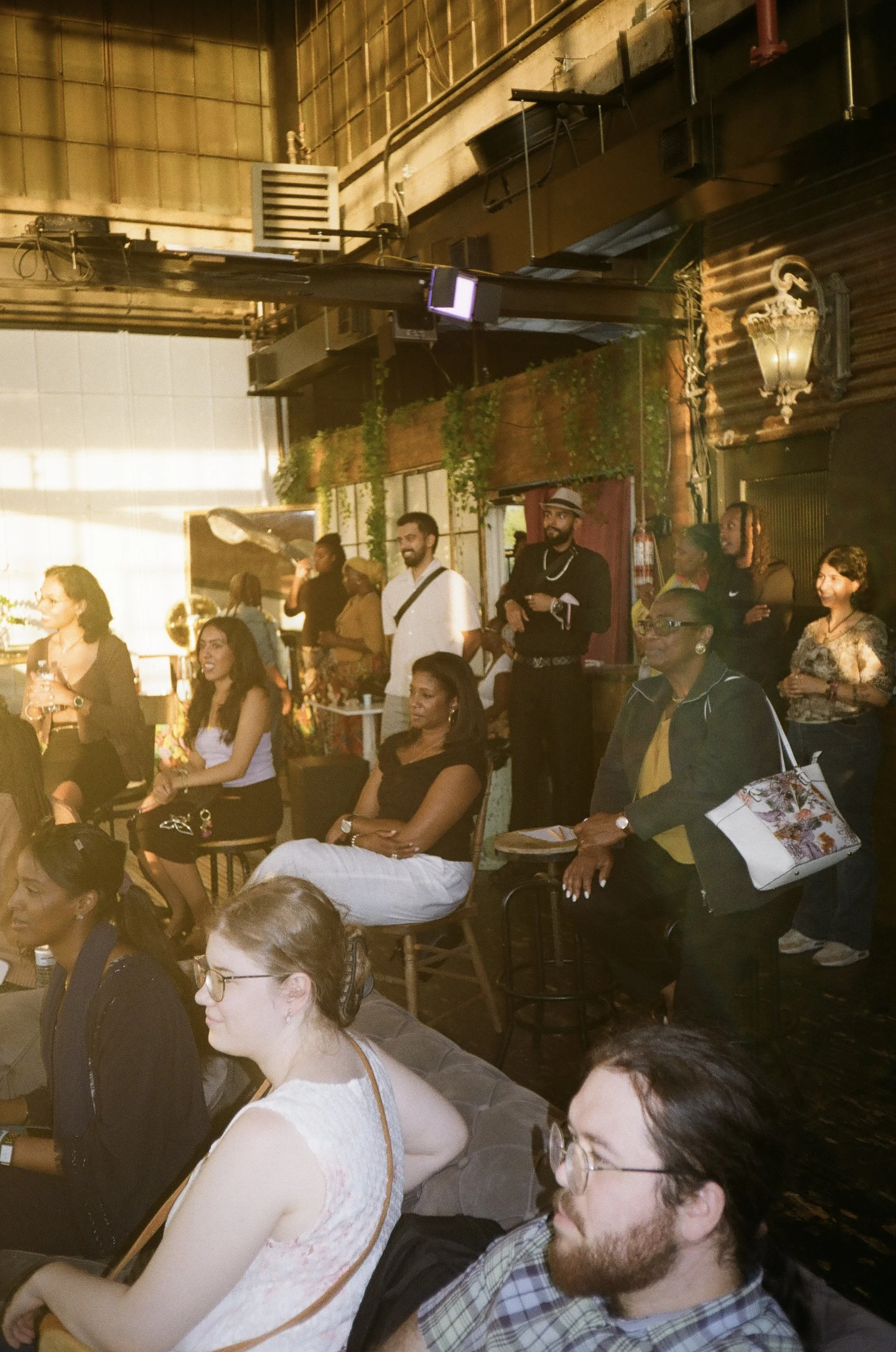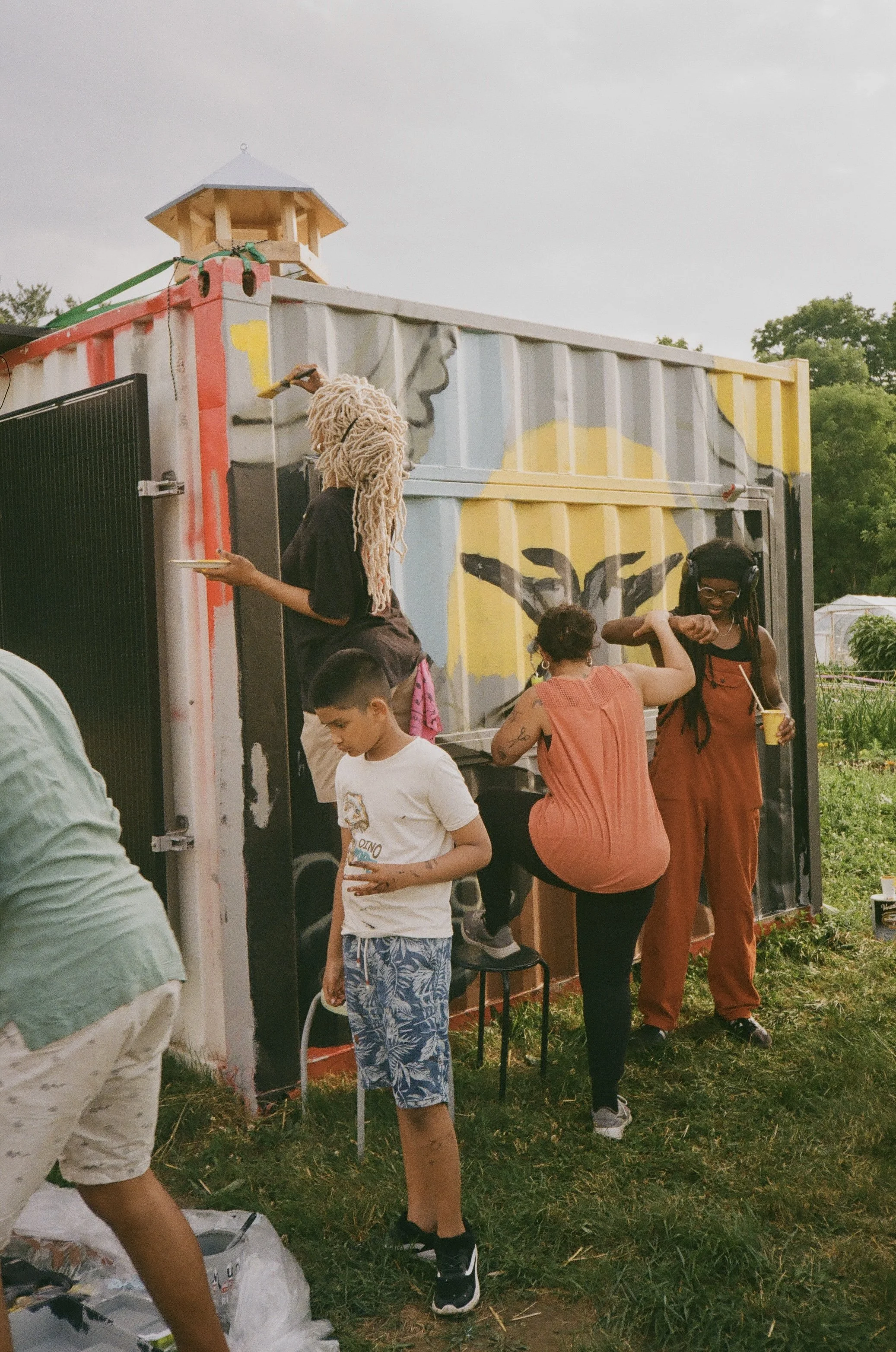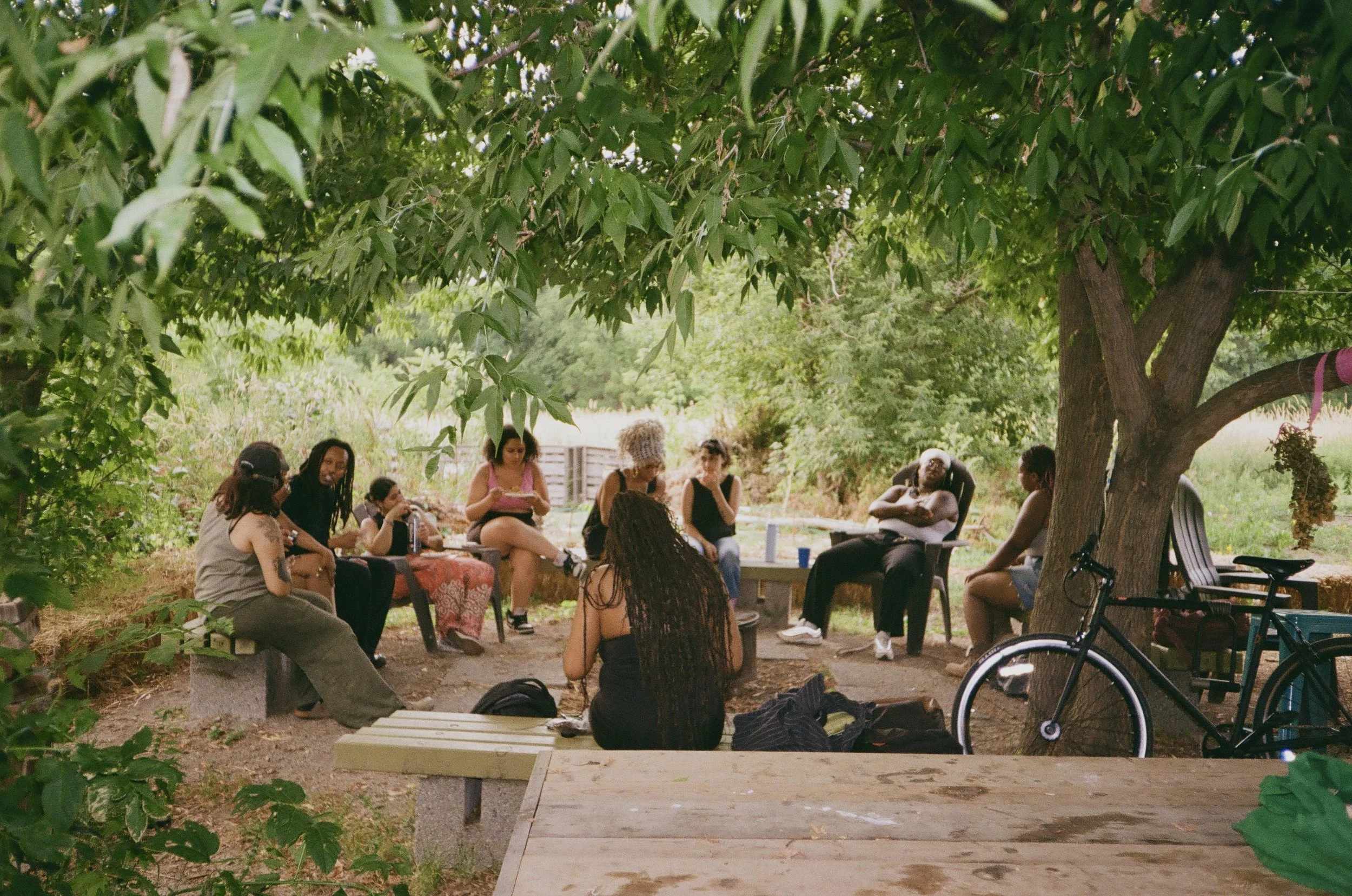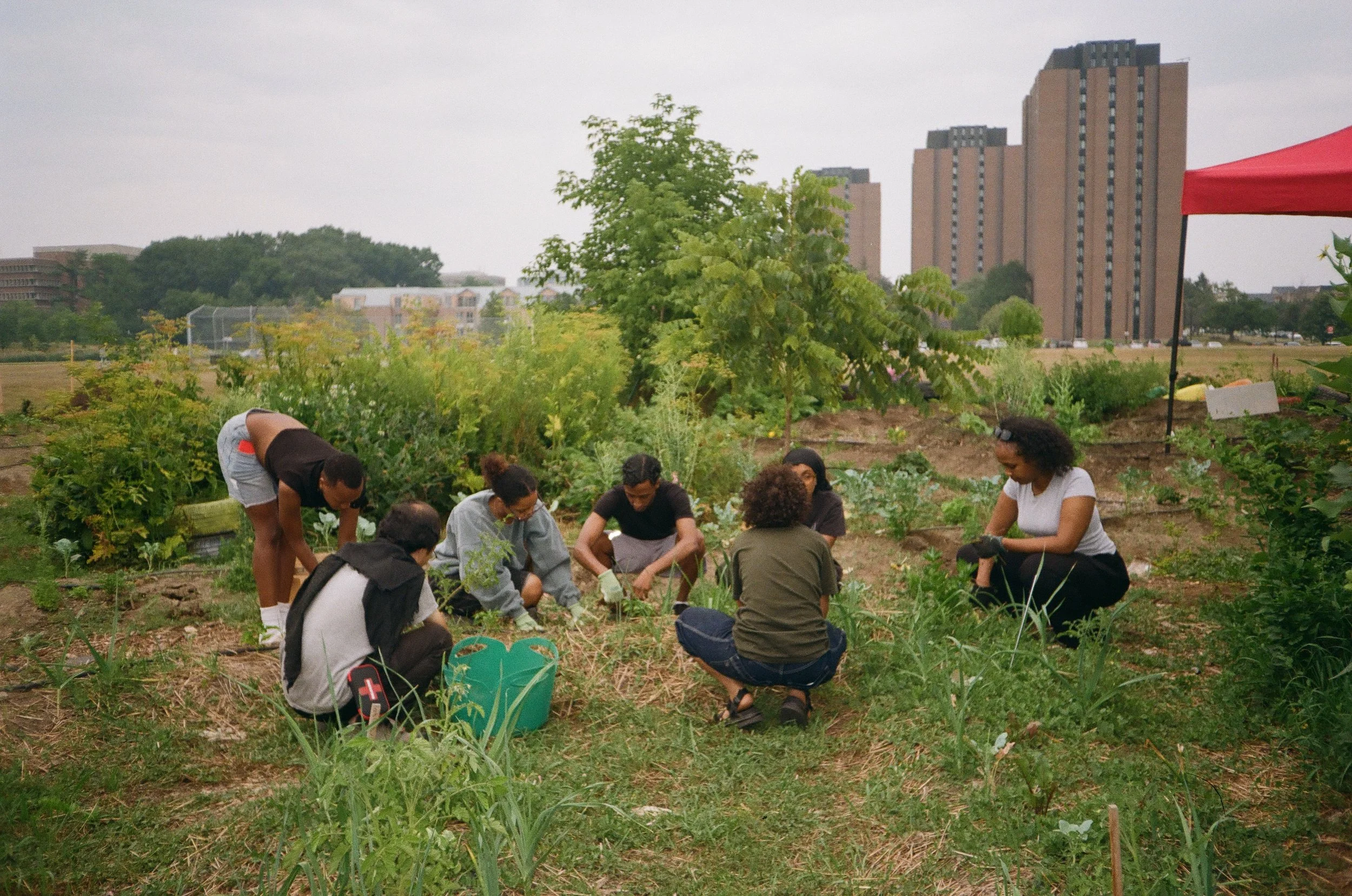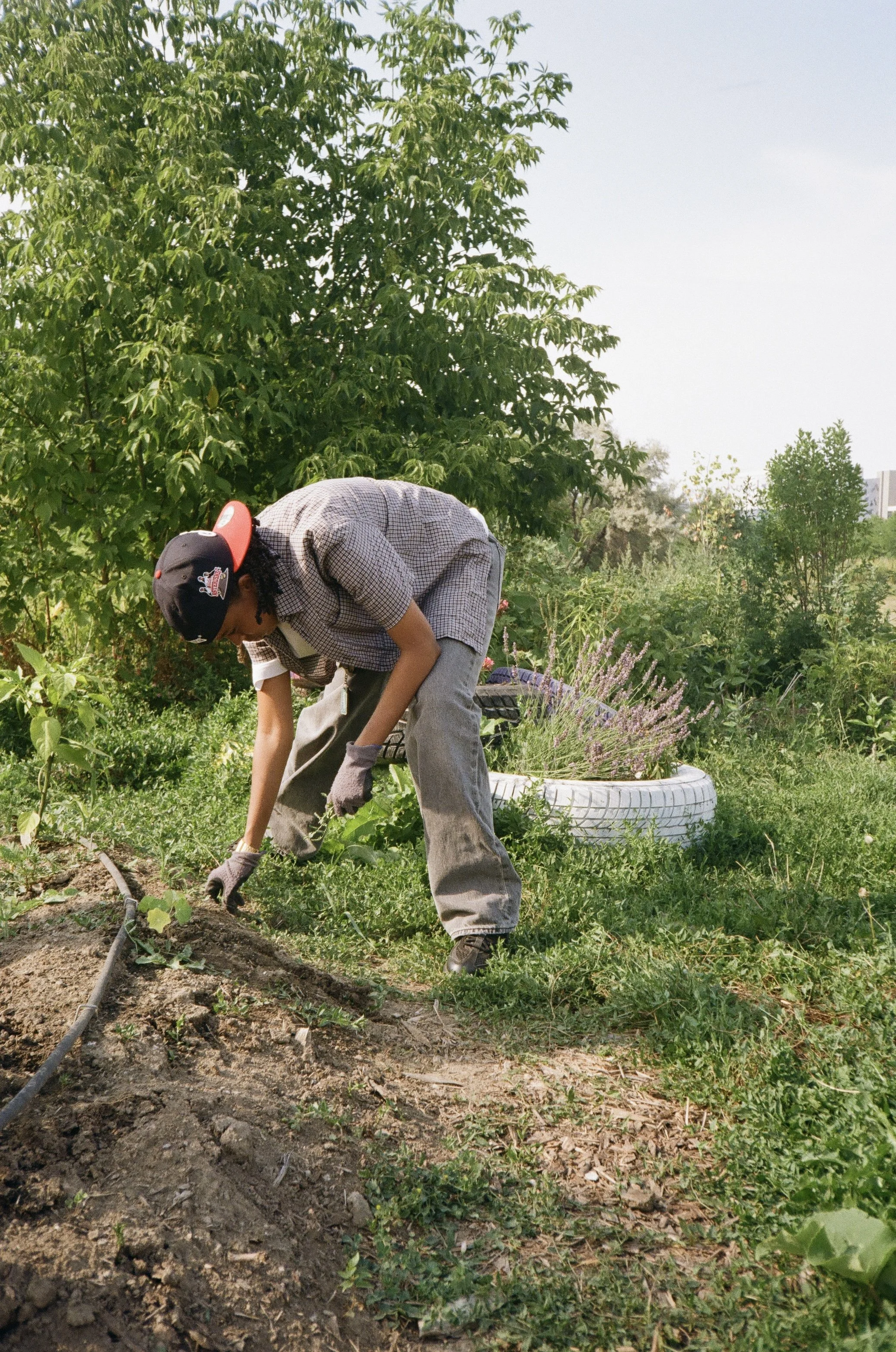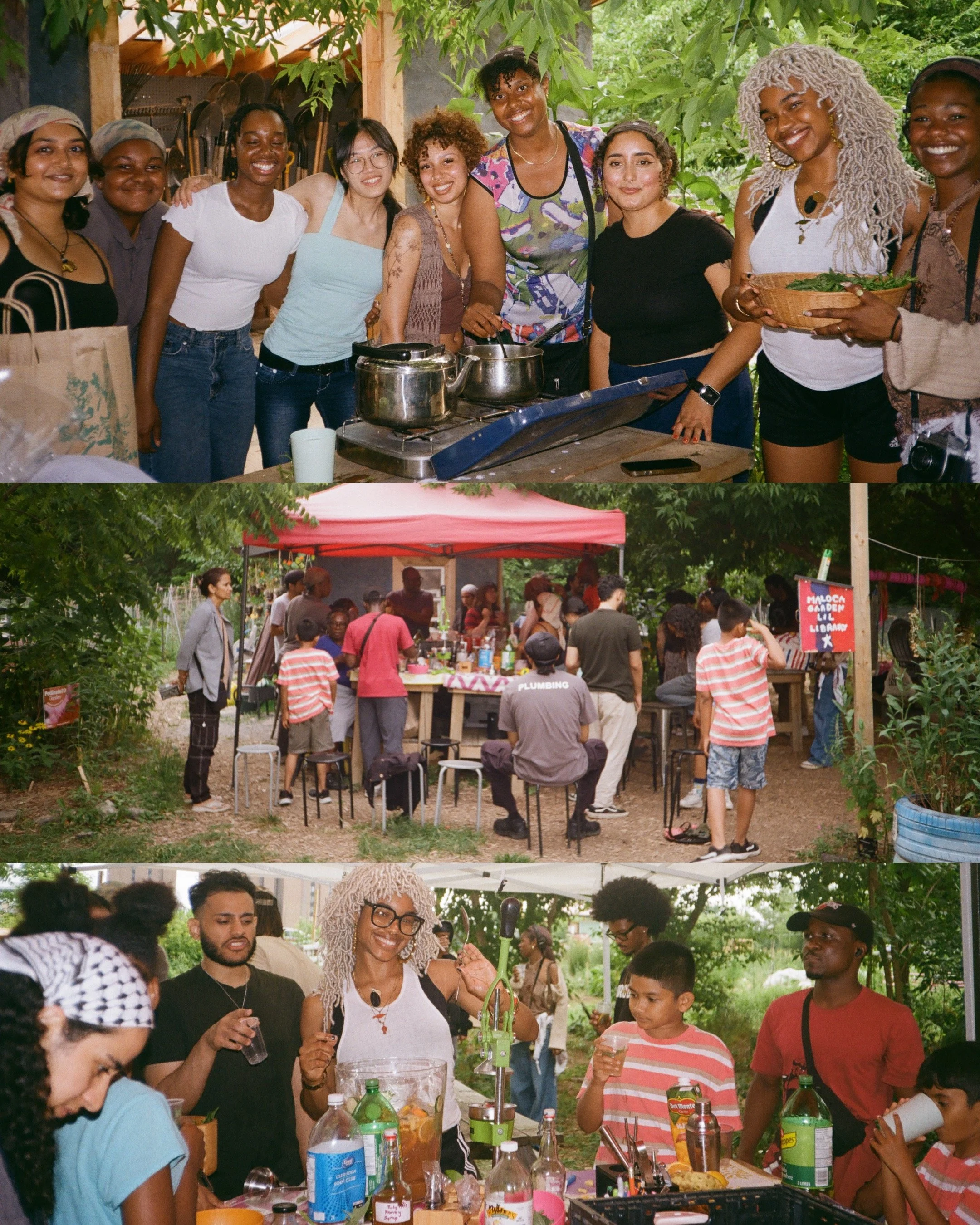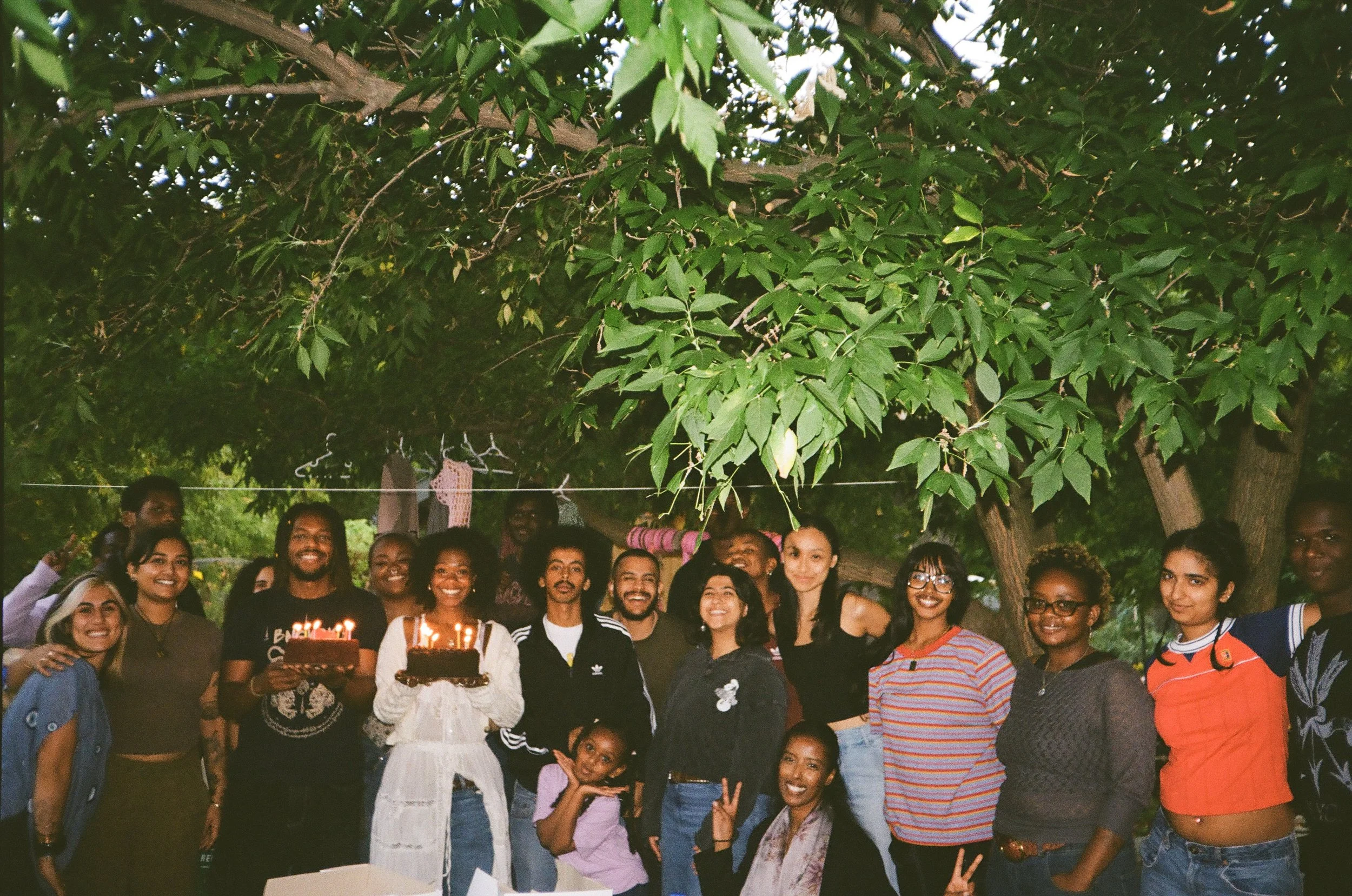Naolo Charles
… is strengthening the climate movement through community-engaged projects, environmental job training, data-collection around climate pollutants, and local clean energy initiatives.
“Organizing needs to start with building community first,” says Naolo Charles, founder of the Black Environmental Initiative and co-founder of the Canadian Coalition for Environmental and Climate Justice, with Ingrid Waldron. Naolo has embedded that community-first ethos in BE Initiative’s programming, which aims to engage the talent and power of Canada’s Black communities in building a stronger environmental movement. BE Initiative’s current and in-development programming falls under four streams; with the first two focused on engaging Black communities in environmentalism through cultural and community work:
Helping local and newcomer Black youth grow their own food at the Maloca community garden at York University, building community and bringing new people into environmentalism (BEI has just released a mini-documentary about this work).
Running workshops with groups like the African Canadian Heritage Association, providing training on environmental science and education rooted in African values and culture.
From there, BE Initiative gets people activated more deeply through programs like:
The Green Jobs Program, providing training, mentorships, scholarships and placements for Black youth and working-age adults in the fields of environmental policy, environmental sciences, and green construction – this program has already developed several new key leaders in the field.
The Environmental Squad Program, sending people into communities to track people’s exposure to pollutants, then pushing for policy change and community mobilization around it. This program is in development with the City of Toronto but requires further funding to move ahead.
Finally, Naolo’s hope is to use the trust, networks and community benefits developed through these programs to mobilize Black communities around developing local clean energy projects, similarly to the advanced work happening in many Indigenous communities. In all of his work, Naolo embeds mentorship, collaboration and coalition-building as ways to break down competition between communities, and strengthen Canada’s climate movement as a whole.
This interview was conducted in Spring 2025.
“Organizing needs to start with building community first”
On collaboration between communities to strengthen the climate movement:
“One of the biggest challenges to [mass] mobilization is the fact that historically we’ve created an environment that incentivizes competition over collaboration. This is true of philanthropy, it's true of the social sector, it's true of the entire economic system. Looking at colonial history, divide-and-conquer has always been a powerful tool of fragmentation. My work in environmental justice is very much informed by that.
This is why investing in organizations led by the people most impacted matters: there are internal divisions within communities that need healing in order to mobilize fully. Once we reduce lateral violence and strengthen collaboration within and between communities, we are also better positioned to build alliances with broader society. That was always the vision behind the CCECJ coalition.”
What’s next for Bill-226:
“The potential in this environmental justice law is huge. We tend to look up to America for their work in environmental justice and social justice in general. And it’s true that they have things there that we don’t have. But they also have never had a federal law like we just won. So there’s a lot of potential. If there is a willing government, there’s a lot that can come from that.
A key next step is infrastructure: the federal government needs to create dedicated funding envelopes for environmental justice groups – not just coalitions like the CCECJ, but also grassroots organizations tackling environmental racism on the ground. They need resources for legal responses, community research, data collection, and capacity-building. That’s what will unlock the potential of this law.”
On how “divide and conquer” damages Canada’s environmental movement:
“Environmental justice in the U.S. connects across Indigenous, Black, Latino, and many other communities. In Canada, equity frameworks have rightly prioritized Indigenous peoples, given we are on their lands. But often this has meant that other racialized communities, also deeply impacted by environmental racism, are left out of the conversation.
This ‘one seat at the table’ approach unintentionally limits the movement. Justice is not a limited resource — there’s enough justice for everyone. We need multiple tables, with Indigenous leadership at the center, but also with room for Black, migrant, and other equity-denied communities to sit alongside. That’s how we strengthen Canada’s climate movement.”
Why building community first matters:
“One of the key priorities in the BE initiative is the mobilization of grassroots communities. We’re trying to go into communities and interact with people, educate people, and develop environmental values in ethno-cultural communities, particularly Black communities. One of the most promising initiatives is the urban agricultural program that we’re delivering at the Maloca community garden at York University. There’s a progressive development theory of change behind the work that says: organizing needs to start with building community first. One of the places where we’ve been able to do this the most is in that program. It’s very well-organized, with a clear structure and dedicated individuals. It creates a lot of opportunities for newcomer Black youth to build community in the green space, learning about how to grow things. It’s great!”
On cultural revitalization in environmental work:
“When we look at environmental racism, one of the key consequences is the displacement and cultural erosion of communities. Many Black communities in Canada — historic settlements across the country — have disappeared due to gentrification and displacement.
For us, a key priority in BE Initiative is cultural revival. Just as Indigenous communities have revitalized their cultures and knowledge over the past two decades, Black communities too need space to reconnect with ancestral environmental values.
Our workshops with partners like the African Canadian Heritage Association are designed to show that environmental values are part of our heritage. Indigenous knowledge has much to teach us, and so too does African ancestral knowledge. Climate solutions will be stronger when we learn from all ancient traditions.”
On good jobs and support for climate policy:
“One of the fastest ways to build support for climate policy is through jobs. Black communities face disproportionate poverty and food insecurity. If we want them engaged in the green transition, we need Black people represented in policy, in climate sciences, and in green construction.
Our Green Jobs program covers all three — and it’s already connecting youth to COP, scholarships, scientific research, and hands-on training. With stable support, we can scale this impact.”
On why data matters to environmental justice organizing:
“We need data to be able to tell the stories of environmental justice. It’s part of the Environmental Justice Law to build the capacity of the government to get the right data. The type of data we need helps us identify what I call “invisible killers” in communities – the pollutants that communities are exposed to on a day-to-day basis, and no one knows about them. When people live in polluted areas, their houses are killing them; their schools are increasing their risk of chronic asthma. Sometimes people are living in buildings built on polluted soil. These create negative impacts in terms of health, and no one is trying to track it.
The program we want to implement is something we call the Environmental Squad Program, where we send people into communities to track exposure to pollutants. We get hyper-local data to identify threats that we’re not aware of now, then push for policy change. We have a collaboration with the City of Toronto, but we need funding to put things in place.”
On building up to the launch of community clean energy:
“You have to start somewhere initially—where you give environmental science education, where you mobilize communities, go to communities, improve their health, build relationships with them. And from there you can start having that bigger community energy project. That’s a key goal of the BE Initiative—to get to that point. But we need to be rooted in community and have the capacity to mobilize people every day. When you go into communities and you create jobs, you protect people from pollutants, you start building deep relationships, and then you can get them to say: ‘Hey, do you wanna get into community energy?’ Because you have that trust.”
On BEI’s budget:
“The BE Initiative can run all of its core programs on about $450,000 annually. That’s a modest budget in the nonprofit sector, but one that would make our work 10 times more impactful than it is today. And with additional support, we can build out even more programs over time.”
The BEI team.


